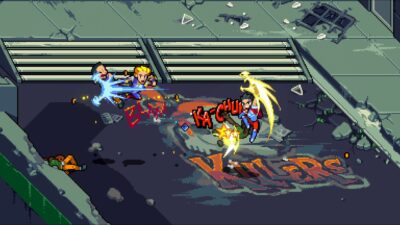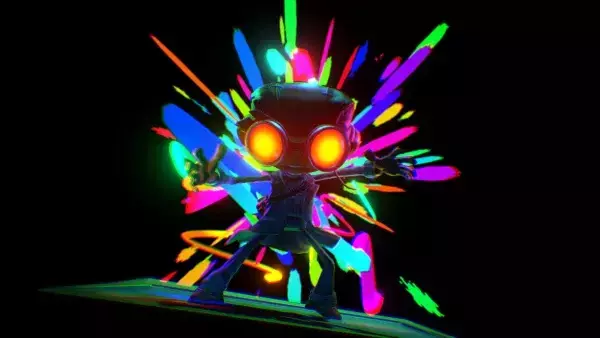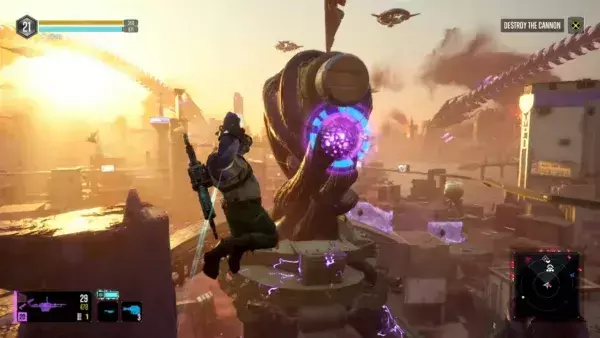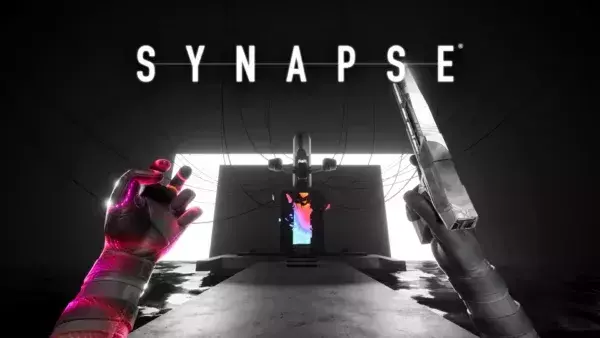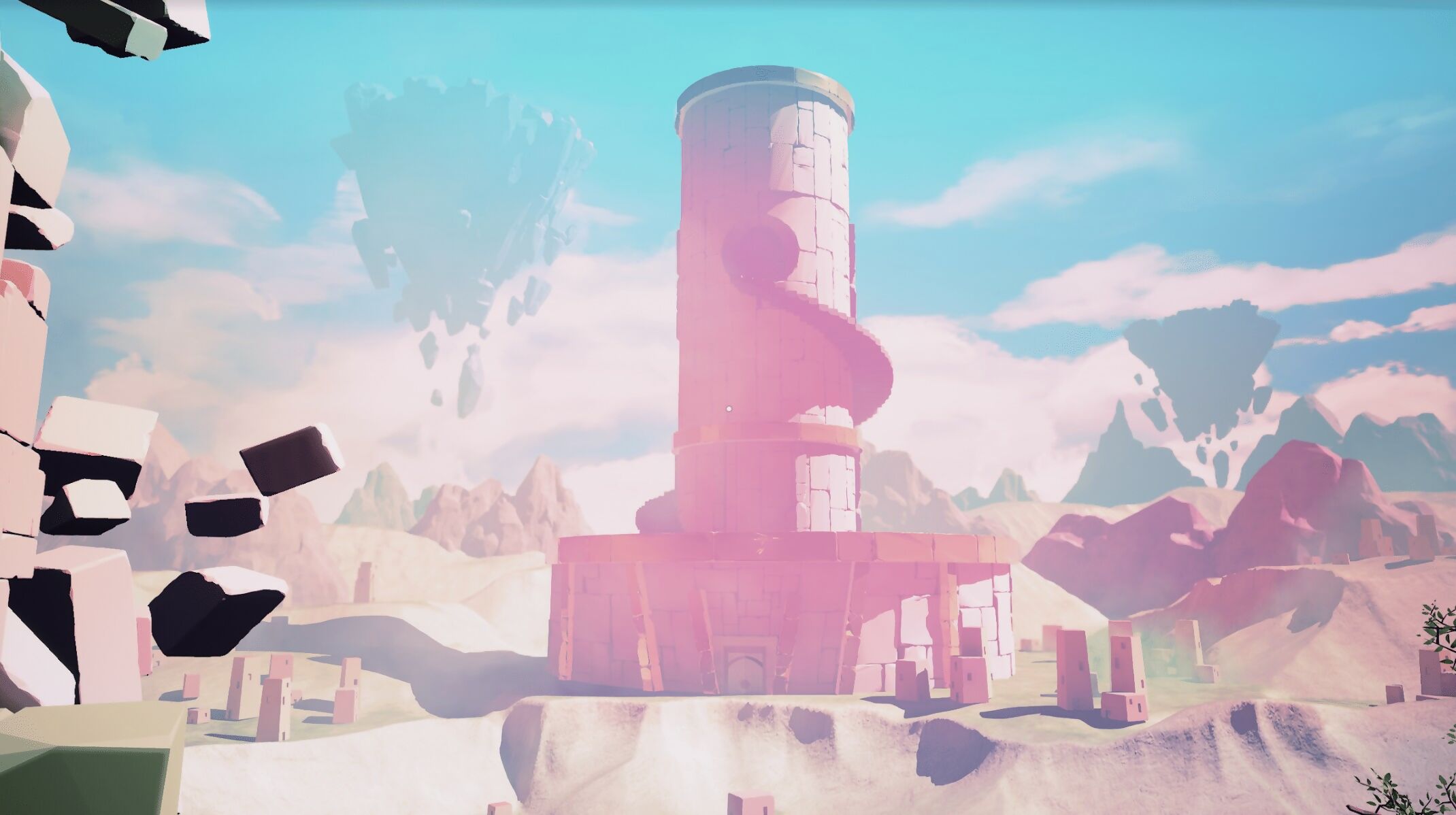
Ryan scratches his head over Shifting Tides’ ethereal puzzler, The Sojourn…
Whether they’re small, contained match-three puzzlers or big, open-world action RPGs, all games are governed by rules of some kind. Those rules can be hidden behind big guns, even bigger explosions, or captivating graphics or soundtracks, but they’re seldom too far from the surface. This is especially true of The Sojourn, developer Shifting Tides’ first-person puzzler released in 2019. It takes place in a soft-focus, surreal world of ancient, abandoned cities and towering double doors that creak open as you approach. Its soundtrack creates an atmosphere of quiet contemplation, while the aphorisms you find in scrolls or above exits (“A collage of corruption is still corruption”) add to the philosophical tone.
But while The Sojourn’s world may be dreamlike, its puzzles deal in cold, hard logic. The game’s split into discrete areas (or ‘challenges’) with a single exit at the end. Getting to the exit requires you to methodically interact with a range of objects dotted around each space. First, there are certain enchanted spots that temporarily place you in a shadowy parallel world. Here you have the ability to switch places with statues, and you can use this power to, say, place a statue on a switch to unlock a gate. Your time in the shadow world, however, is limited by your movement: as you walk around, an energy bar decreases, and once it’s empty, you’re returned to the sunnier ‘regular’ world.

It might sound complicated, but it’s easy to pick up in practice – in essence, you just have to remember that there are certain objects which can only be interacted with when you’re in a temporary second state. As the game progresses, more objects are gradually added to block your path to the exit; there are harps that magically (and temporarily) conjure up bridges when plucked. There are enchanted relics which can be plugged into statues, allowing you to switch places with them without needing to enter the shadow world. There are cloning chambers capable of generating a second statue once activated.
Shifting Tides’ puzzles are undeniably devious, and I often found myself grabbing a pen and paper to sketch out the positions of objects and the moves I’d need to make in order to get from point A to point B. But while The Sojourn is challenging from a logical perspective, it’s difficult to connect with on a more emotional level. There’s precious little of the mischievous design that enlivened Portal or its sequel; there’s none of the dizzying, often awe-inspiring spatial puzzle ideas that made Superliminal so unforgettable. Even The Witness, whose 2D connect-the-dots puzzles could feel a bit dry at times, was capable of wrong-footing the player with surprising and clever twists on those puzzles.

By contrast, The Sojourn’s puzzles become more complicated, but those complications don’t combine to create new surprises or a sense of progression. It reminds me of something Stuart Maine wrote in his puzzle design guide on page 50: “Once players are comfortable playing with one of your systems, can you turn it on its head so they have to do the opposite of what they were expecting? Once you’ve exhausted each system alone, consider how they can be combined in surprising ways.”
If you think about games in terms of verbs – the words that describe the stuff you actually get to do – Superliminal allowed the player to shrink, grow, push, pull, throw, smash, jump, and so on. In The Sojourn, you’re mostly switching and activating. ‘Switch’ and ‘activate’ aren’t particularly scintillating verbs, which might explain why they aren’t necessarily exciting things to do repeatedly in a five-plus hour game.

Having typed all this, I still spent several hours in The Sojourn’s company, quietly doing battle with its designers and their cunning arrangements of statues, switches, harps, and mysterious energy beams. I pondered over the meaning of its story, largely told through static figures of mothers and fathers, soldiers and old sages. (I initially thought it might be a riff on Shakespeare’s seven stages of man, before I got to what I can only describe as the “parents introduce their adolescent son to Gandalf” stage illustrated above and realised I must’ve gotten my wires crossed.)
As the last statues clicked into place and the final doors opened, I patted myself on the back and congratulated myself on a job well done. I wasn’t left awed as I was with Superliminal, nor as engrossed by an enveloping sci-fi plot as I was with The Talos Principle. The Sojourn didn’t capture my heart, but it certainly exercised my brain.


